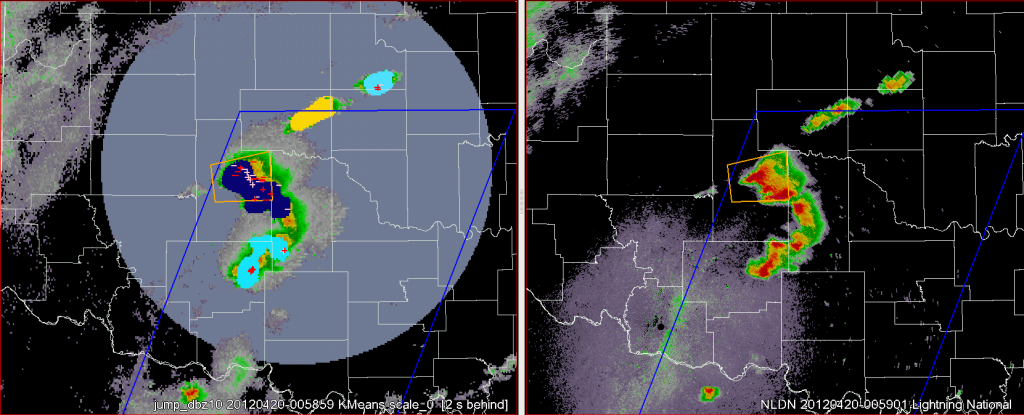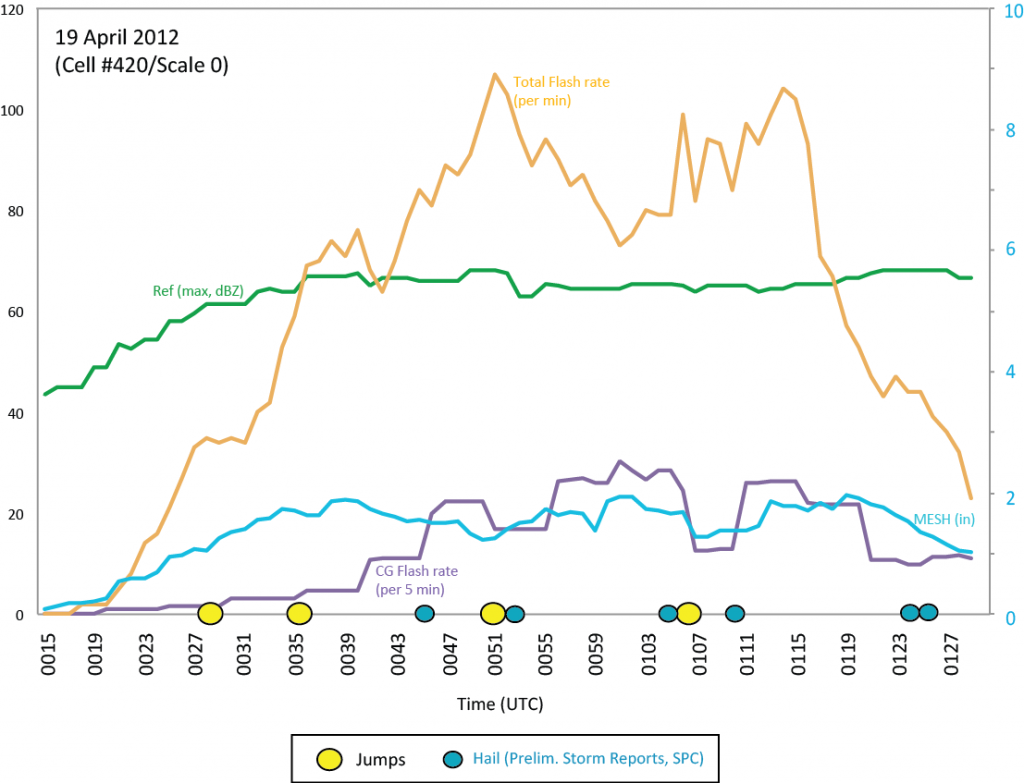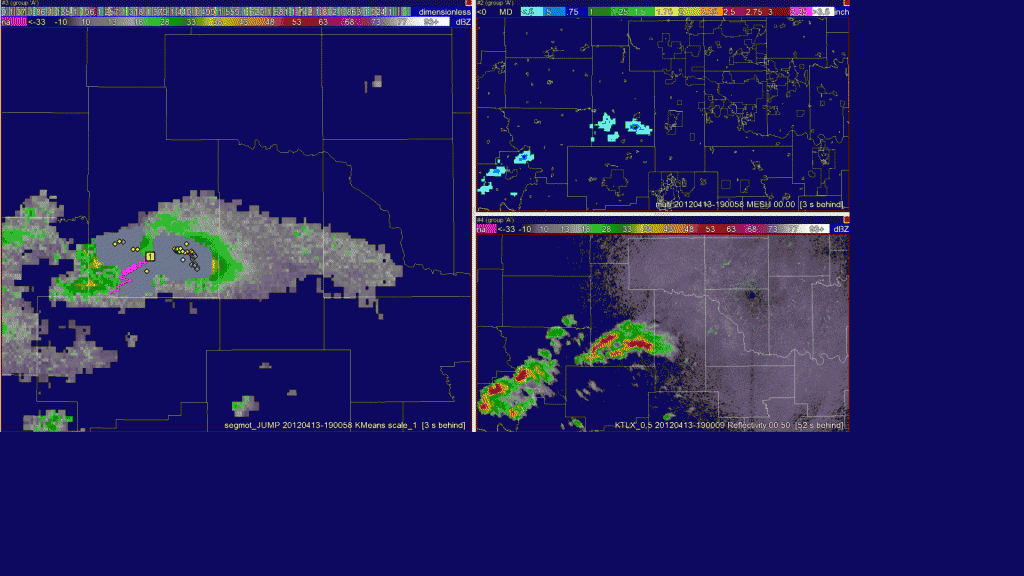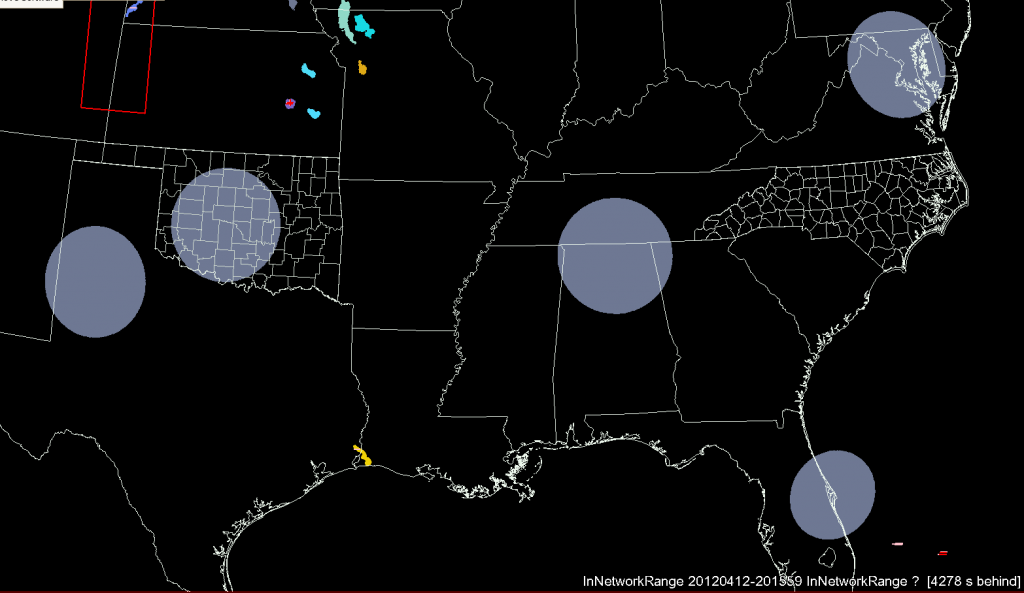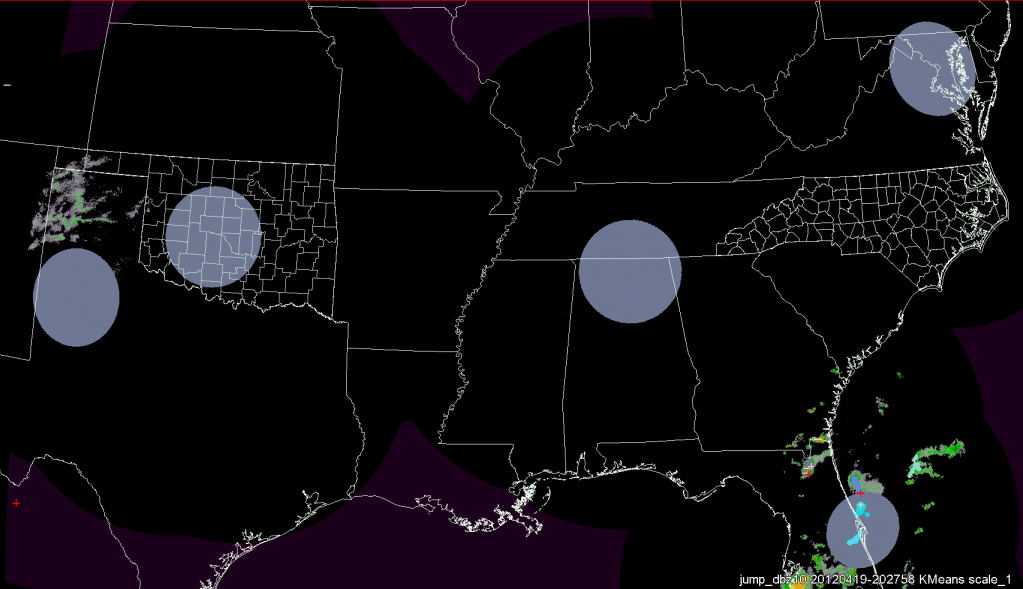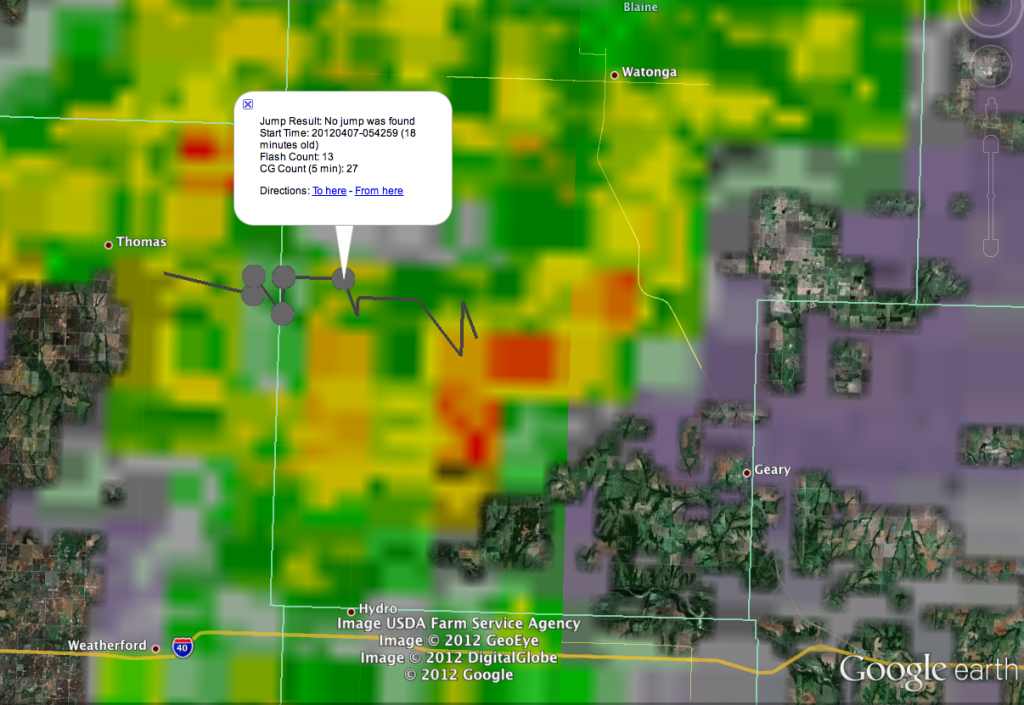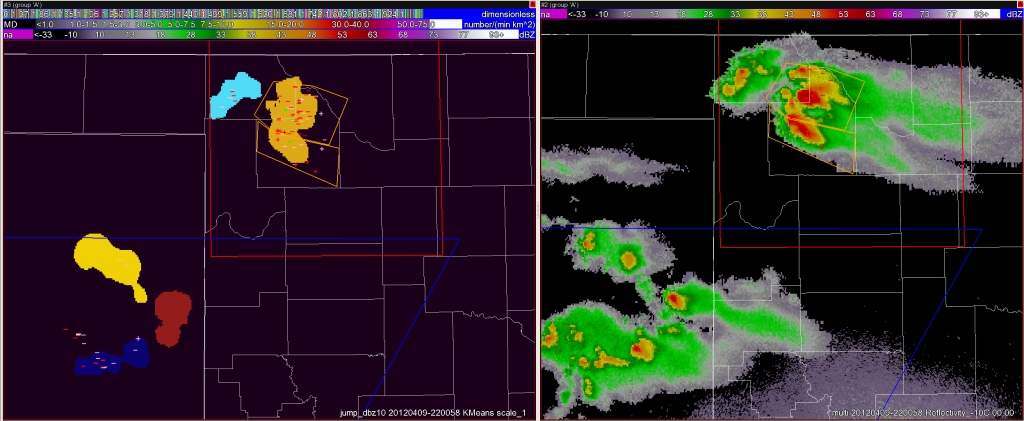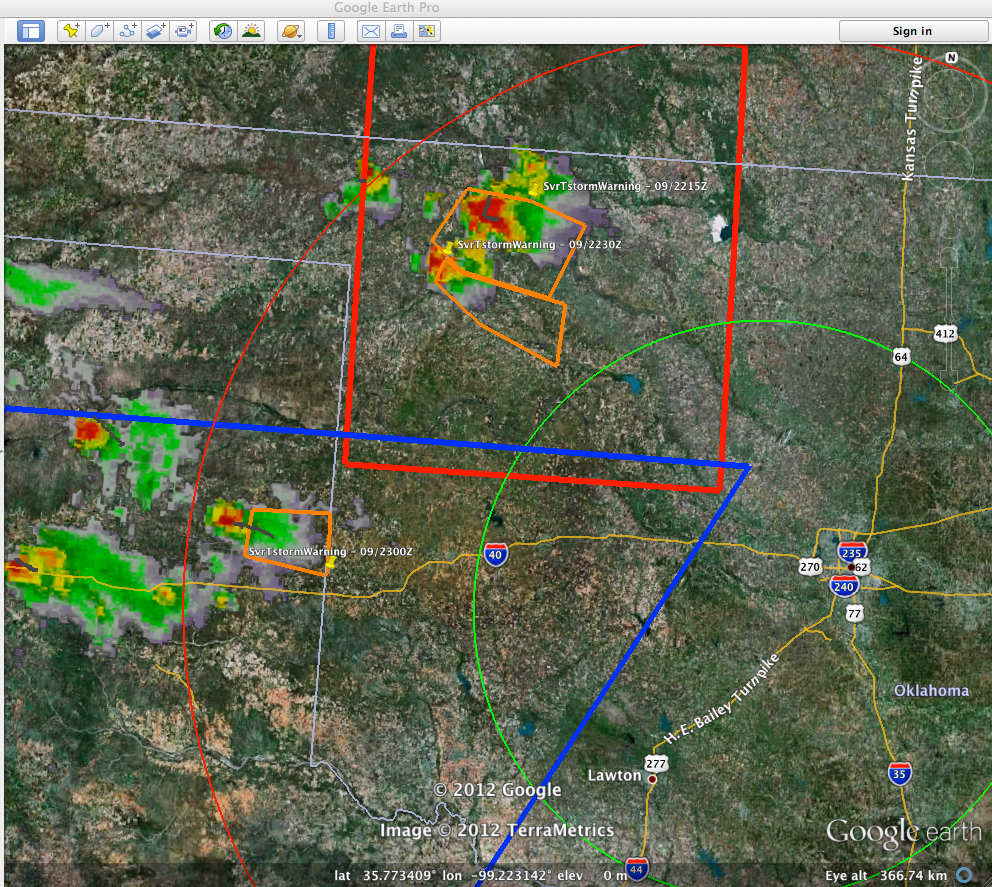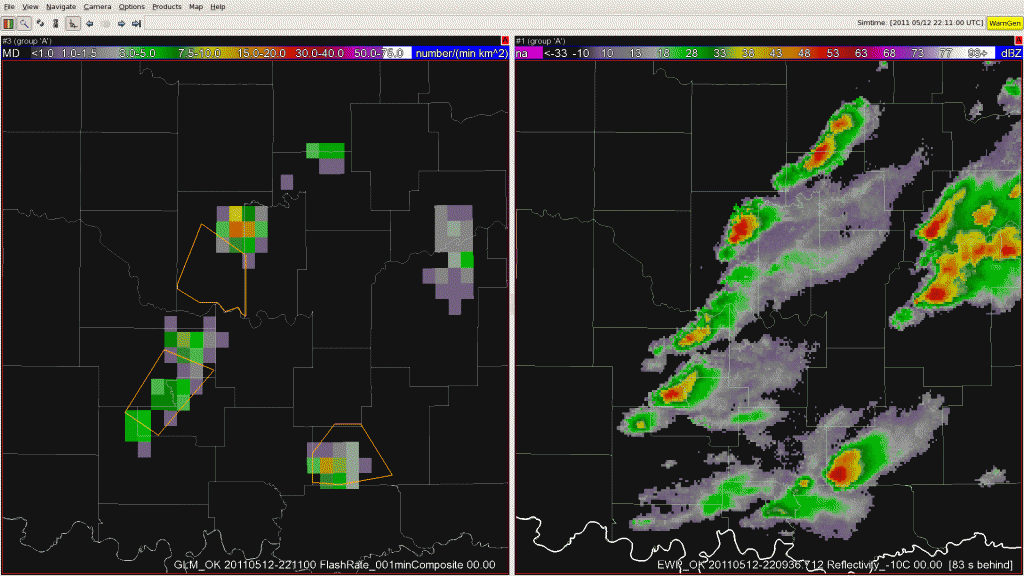Lightning activity has been prevalent in the FL-LDAR domain today and the ltg jump alg has detected multiple jumps in range of the domain. Scale_0 seems to be the most stable at keeping the storms ID’s unique while scale_1 seems to be dealing with lots of mergers/splits.
In the past half hour (2230-2300 UTC) at least 3 jumps have been detected at scale_0: cell IDs: 31025 @ 2242 UTC, 31107 @ 2245 UTC, and 31184 @ 2248 UTC (additional jumps likely occurred prior to this time).
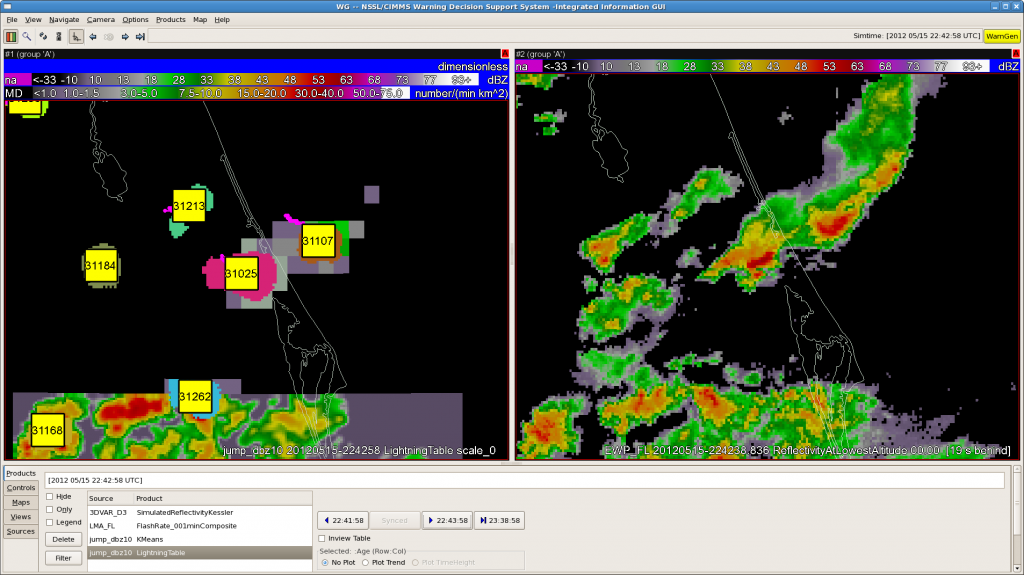
The main cell of interest for forecasters in the HWT operating in the MLB domain has been #31025. 3DVAR products depicted increases in max updraft and vorticity as early as 2230 when the domain was re-centered over the storm. The storm maintained its strength through over the next half hour and the forecaster opted to continue the warning at 2256 UTC (the first TOR warning issued in the HWT was at 2225 UTC, see the forecaster post associated with these warnings for more info). The screenshots below from AWIPS2 include lightning, 3DVAR, MRMS & KMLB radar data for this event:

At the time the tor warning was issued in the HWT:
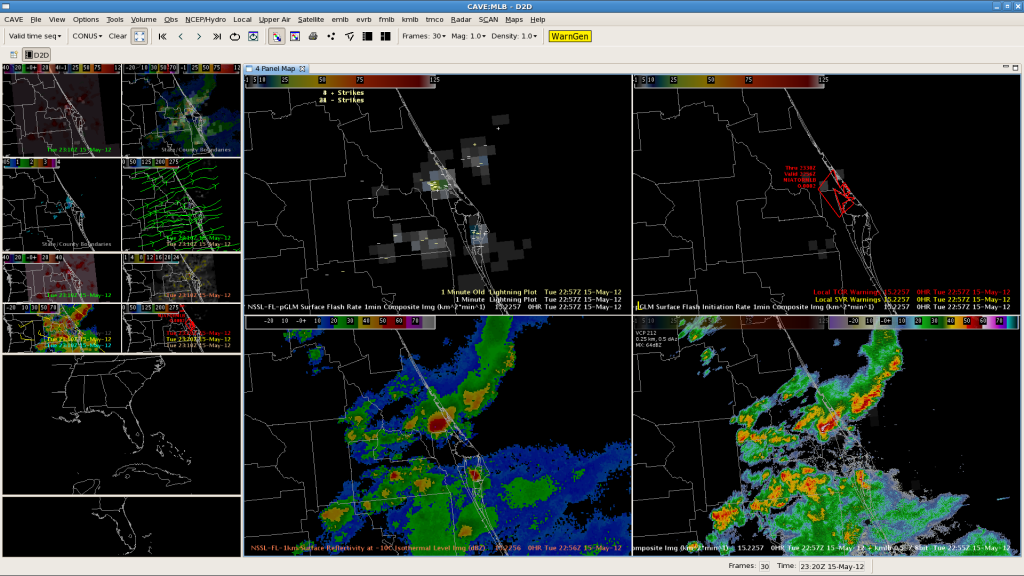
Even as the clusters have become a bit more muddled, the storm tracking algorithm has seemed to maintain a good handle on individual clusters at scale_0, though some of the cell ID’s have changed…
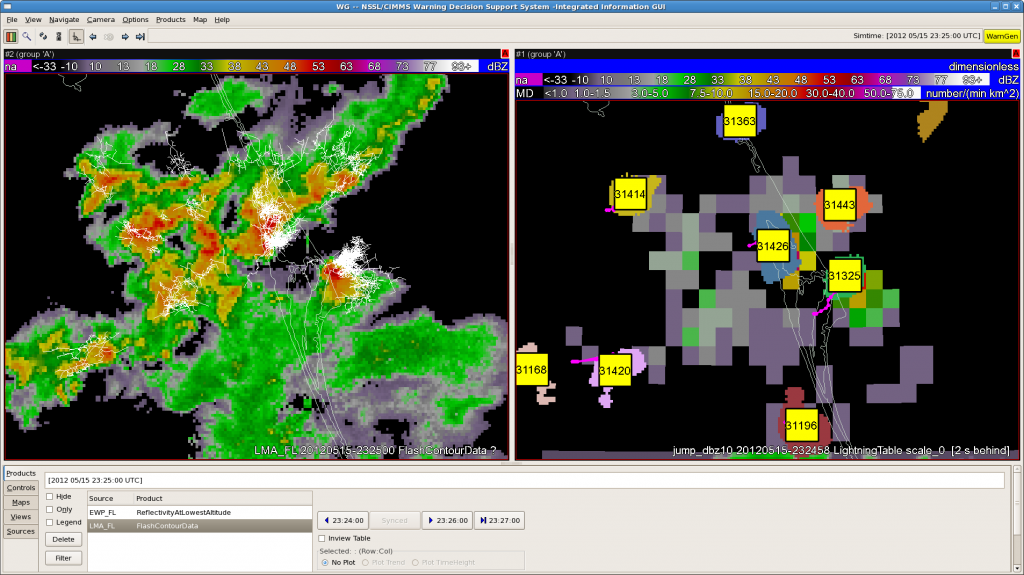
SHAVE is also operational today over this same area… current reports include 1 in hail and high wind:
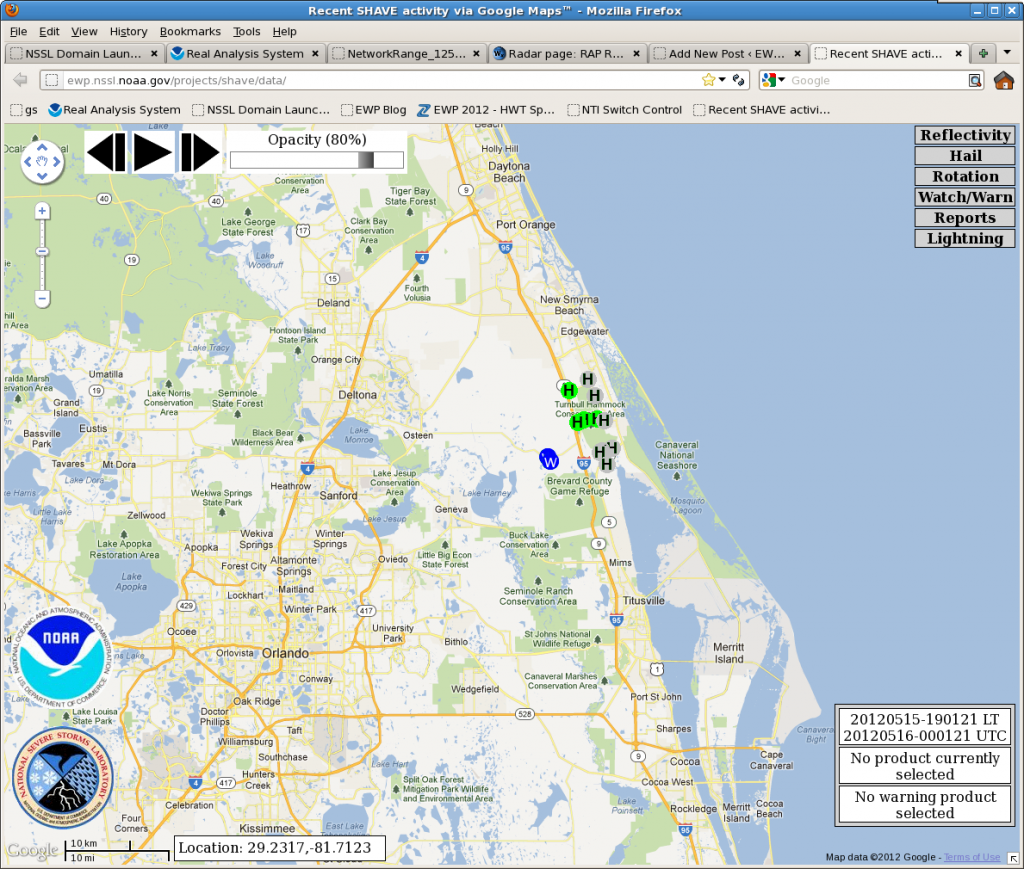
Technical difficulties of note: the KML images are not currently updating on the webpage, but should be back up in the next day or two; it is also possible that cron job notification of a python script stopped running mid-day on 2 May 2012 and data between 2 May and 14 May, may need to be reprocessed to assure that jumps occurred within the network range.
-K. Calhoun


